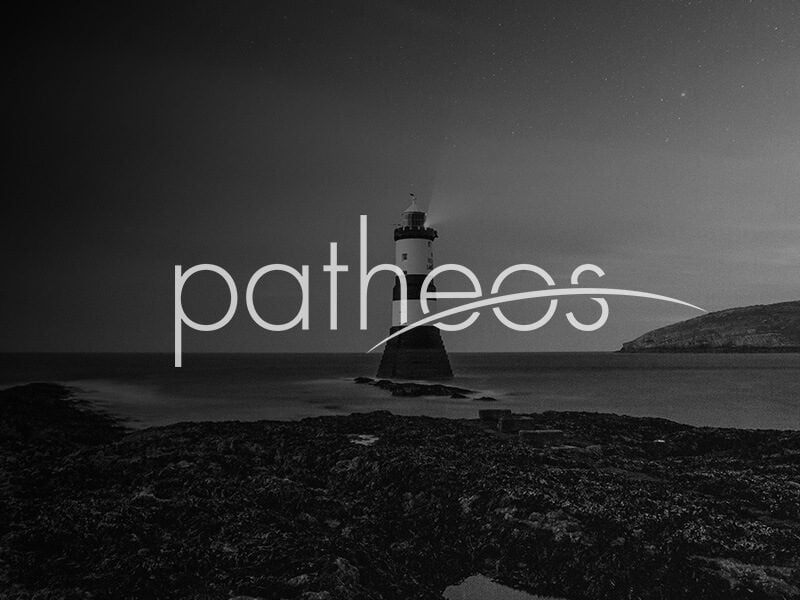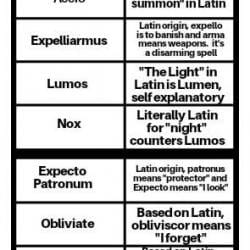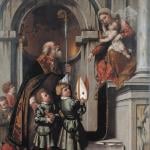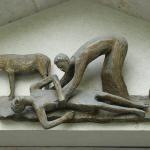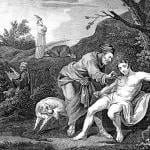Yesterday we discussed the Catholic intellectual tradition. Another reason I was attracted to the Church is the richness of the Western literary tradition that is the daughter of the Faith. Not, of course, that other cultural traditions are not rich too. Indeed, one of the things I appreciated about the Catholic tradition is that it was not afraid (as my own Evangelical tradition was) of non-Christian traditions but was actively seeking conversations with them. It was, after all, born in the maelstrom of Jewish and pagan cultural traditions that was the eastern end of the Mediterranean and it immediately had to grapple with a host of myths, political thinkers, and philosophies and make the appeal to the world on their terms. More than this, it was the Christians who, along with Muslims, salvaged the great pagan literature from the wreck of the Roman Empire.
The questing and curious mind of the Catholic tradition was one of the things that deeply attracted me. From the Fathers of the Church and their wonderful and crazy explorations of everything, to the medievals who passionately wanted to understand the world and who invented the sciences in order to do it, to the great literary tradition of the West, I was deeply drawn. Instead of kooky warnings that I should not watch ET because it was “demonic” (something I actually heard in my Evangelical days), I found an intellectual tradition that wanted to engage with science, art, culture, and imagination.
It had a pope who was a philosopher delighted to talk to anybody about anything.
It has saints like Thomas and Hildegard and Albert and writers like Chesterton, Tolkien, Undset, Newman, O’Connor, and Percy.
As Garrison Keillor lamented about his Lake Wobegon Protestantism, “Catholics had Leonardo, Raphael, and Michaelangelo. We had ‘The Praying Hands’.” And American Evangelicals didn’t even have that. We had “Precious Moments” figurines.
The Church had a vast theological tradition too. We non-denoms had the collective experience of about 50 twenty-somethings for whom the whole history of the Church was mere “head knowledge” and for whom The Bible Plus My Opinion of What the Holy Spirit Thinks was practically all there was to draw on.
And as I eventually discovered, that meant not “being Spirit-led”, but being “tossed back and forth and carried about with every wind of doctrine, by the cunning of men, by their craftiness in deceitful wiles” (Eph 4:14). The most obvious manifestation of this was the Evangelical habit of fads and panics: satanic panics, D&D panics, backward masking panics, heavy metal panics, panics about yoga, Halloween, and black helicopters, panics about gay Tinky Winky, panics about hidden obscenity in Disney movies, panics about this, that, and the other.
If that sounds familiar, it’s because it became the business model of FOX news, which has spent the last 25 years ginning up panics for precisely the same demographic. Instead of learning to think, they were encouraged to panic, react, get frightened, and get angry about the sundry bogeymen coming to steal their stuff, destroy their faith, and kill them all.
Meanwhile, the Faith, following Jesus, said, “Be not afraid” and had a Pope who said it and lived it, facing down Nazis, Communists and assassins with courage, love, and forgiveness. I took it (and take it) seriously when Scott Hahn pointed this out to me (from the eighth Catholic Scripture Study of Matthew I helped him write):
The Power of the Kingdom
As we recall from the introduction to this study, Matthew is divided into five books (like the five books of Moses) bracketed on either end by a prologue consisting of the infancy narrative and by an epilogue consisting of the passion narrative. As you also may recall, each book within Matthew is divided into a narrative and a discourse section. The Sermon on the Mount is the discourse section of Book I. It lays out for us the new law of the new covenant, just as Moses went up on the mountain and laid out the old law of the old covenant. In a word, Jesus, the son of King David, promulgates the new law of the new kingdom. Now, with the conclusion of the Sermon on the Mount, Matthew opens the narrative section of book II in order to show us the power of that kingdom. For is one thing to give us the law, but it’s another thing to give us the power we are going to need to keep that law (which is, until the coming of Christ, one thing that has been withheld from God’s people).
Therefore, the narrative section of Book II (Matthew chapters 8 and 9) assembles ten miracle stories from Jesus’ Galilean ministry. These miracle stories showcase Jesus’ power. He displays power over sickness (8:1-17). But the stories remind us that sickness is part and parcel of a much wider disorder and damage to the natural order. So Matthew also shows Jesus displaying power over disordered and chaotic nature by calming the storm (8:23-27; 9:27-31). Further, there is a root power behind sickness and damage to the natural order: the devil. Therefore Jesus’ power over demons is also described (8:28-32; 9:32-34). And finally, Matthew shows Jesus in the ultimate act of conquest over sickness, disordered nature, and demonic: his defeat of death itself. For, as we will look at more closely next week, Jesus not only heals, he raises the dead (9:18-26). In short, Jesus’ authority is demonstrated not merely because he speaks with authority, but because he acts with divine power—a power he means to share with his Church.
The Conquest of Sin and the Beginning of Pharisaic Opposition
It is notable that the very first miracle of healing recorded by Matthew is that of a leper. What is even more notable is the method Jesus chose to perform this miracle. He could have said, “Be healed!” and that would have been enough (as he showed when he healed the centurion’s servant (8:5-13). But instead Jesus does something very deliberate and significant: he touches the leper (8:3).
Now under the old covenant, such an action was regarded as defiling. Touching a leper meant you were ritually defiled and could not go up to the Temple to worship. It meant you had to go through a whole week of purification. Uncleanness, sin, and defilement were understood to be more powerful influences than cleanness, sanctity, and purity. In the old covenant, sin was the superior power. When someone afflicted with some ritual uncleanness that symbolizes sin touched someone who was clean, the “flow” of power went in one direction only: the clean person was defiled but the unclean person was not sanctified.
However, when Jesus touched the leper something astounding happened: the leper became clean and Jesus was not defiled. The flow of power was, for the first time, reversed.
But not everyone can see this. For the Pharisees have learned the right lesson but drawn the wrong conclusion from the law of Moses. Under the old law, ritual defilement was intended as a kind of sign or shadow. It was meant to show us in our pride that we could not, by our own strength and power, keep ourselves clean from sin. The power of sin is greater than our power of sanctity. So the Pharisees understand sanctity in only one way: separation. Indeed, the word “Pharisee” comes from the Hebrew term meaning “separate”. They reasoned that if the power of sin is greater than our power of sanctity then the solution was to separate themselves from all that was unclean and even all that had touched what was unclean. In short, they apply to their personal lives a ritual code that was originally intended only for the Temple. They attempt to keep themselves as pure as the priests serving in the Temple. And so they separate themselves from the Gentiles, from touching the dead and dying, from lepers, and from menstruating women. They are right to see in these ritual prohibitions an image or sign of lifelessness. But they are wrong to conclude that by separating themselves they can avoid the sin which ritual uncleanness signifies. And so in an ironic way, they take the mirror of ritual uncleanness that God has given them in the Mosaic Law, and instead of seeing in it an image of their own uncleanness and defilement by sin, the turn it around and say to those around them, “See how unclean you are!”
Naturally then, when Jesus appears on the scene, they simply do not know what to do with him and are motivated by their pride to misunderstand him. Jesus, in Matthew 8, turns the Pharisaic understanding of the law on its head. He touches lepers and they are healed (8:1 4), receives Gentiles and they receive faith (8:5-13), consorts with demon-possessed people in a cemetery and they are restored (8:28-31), and, in the next chapter, permits the touch of a menstruating woman and she’s healed (9:18-22), touches the dead and she is raised (9:25), and eats with tax collectors and sinners and makes them saints (9:9-13). Yet, in all this, they see only the ritual defilement, not the revolutionary reversal in the flow of power. For, as Jesus points out elsewhere, pride has blinded them (John 9:35-41). They are so certain they are clean they cannot say, “Lord, if you’re willing, you can make me clean.” And so they miss the crucial lesson that the time for separation is past. In Israel’s childhood, separation from uncleanness and sin was necessary just as it is necessary for us to keep our children from “bad influences” lest they become imitators. But with the dawn of the power of the Kingdom of Heaven, it is the bad influences that are to be conquered with good ones, sin that is to be conquered with virtue, and death that is to be conquered with life.
And yet now, twenty years later, I find myself confronted with an American “faithful conservative Catholic” demographic that, so far from living in the historic Catholic confidence in the intellectual and spiritual robustness of the gospel, instead has (again like tofu) taken on the American conservative Evangelical habit of a) listening to know-nothing folk heroes, b) panicking over everything, c) believing crank conspiracy theories, d) fearing the devil instead of God, and e) abandoning both faith and reason in favor of mere lust for power. How did it come to this?
More on that on tomorrow.




